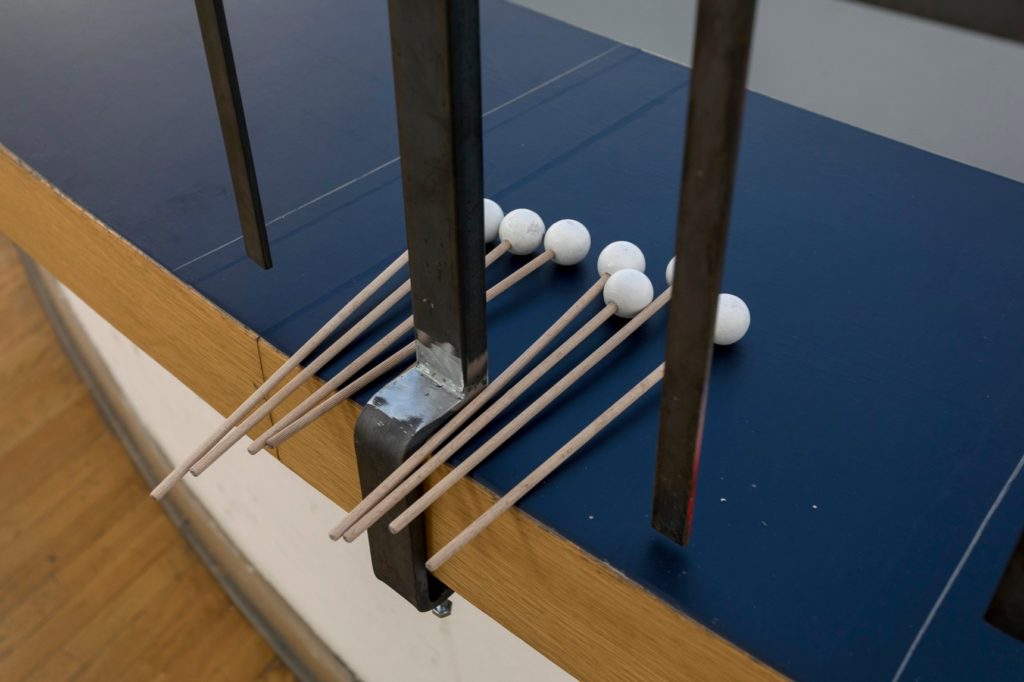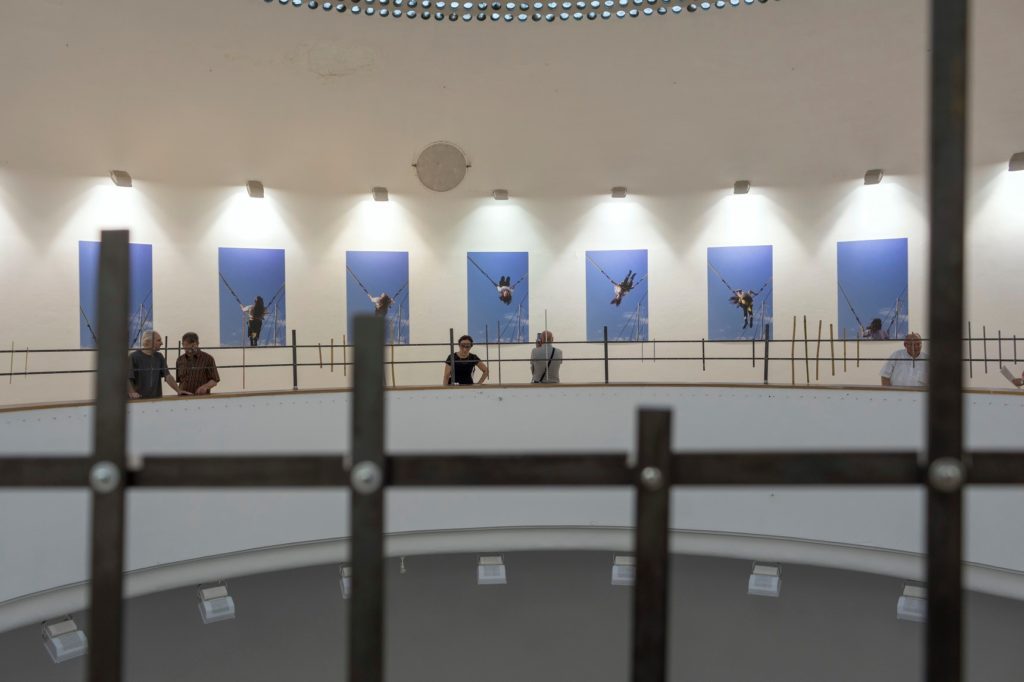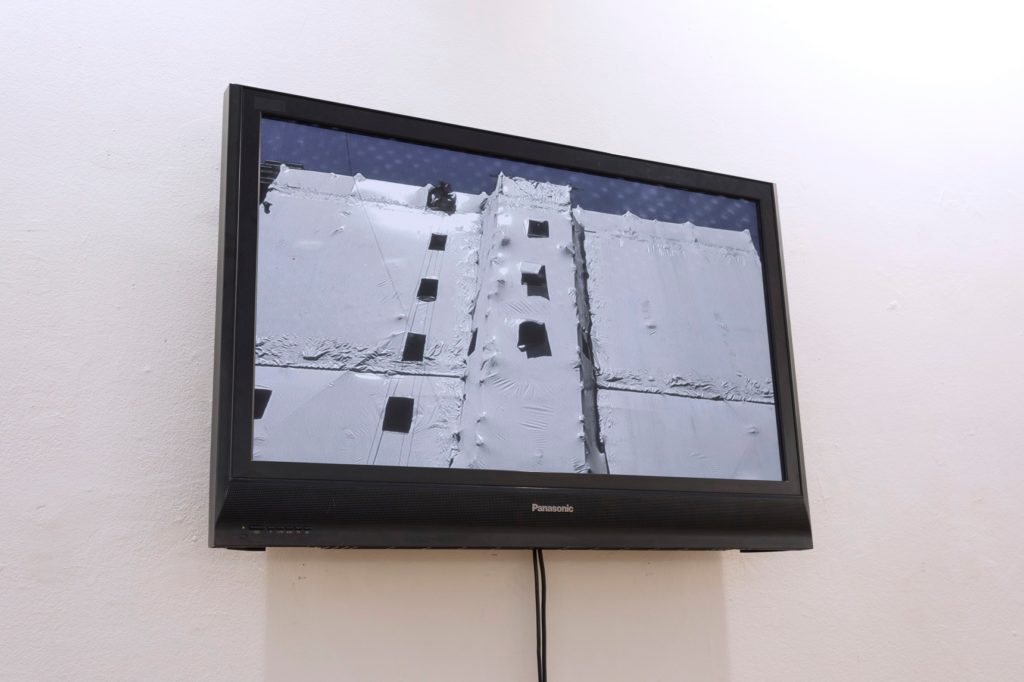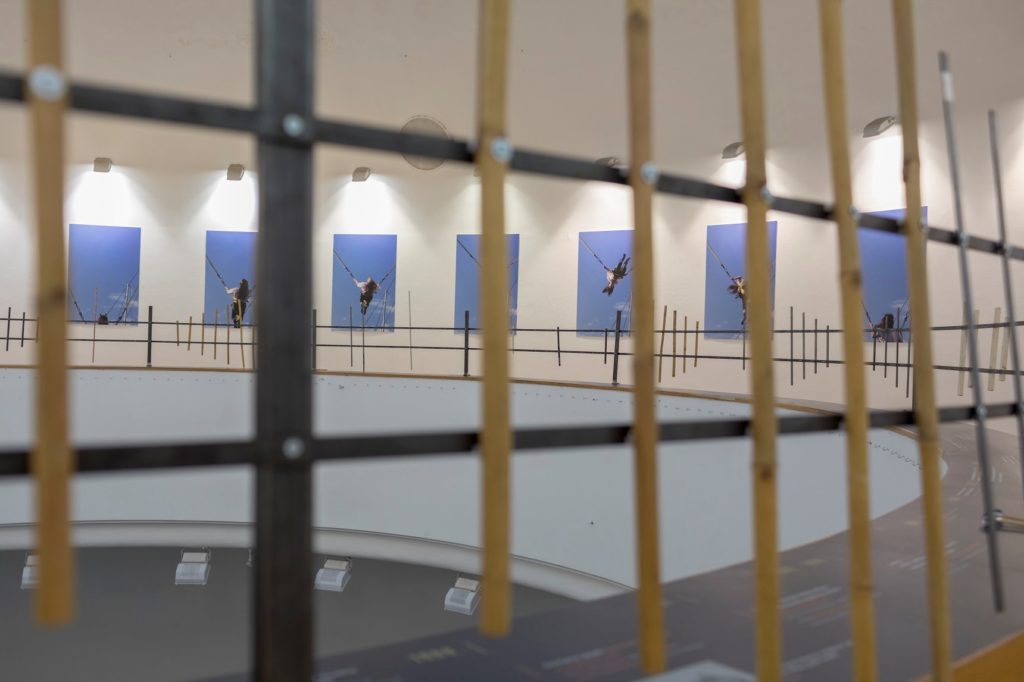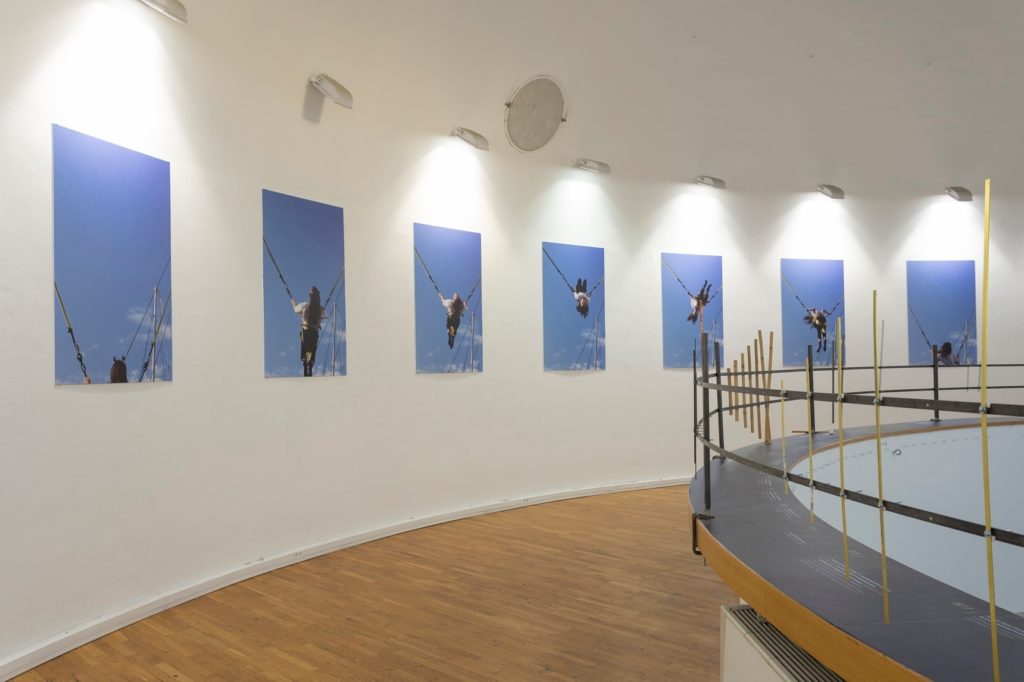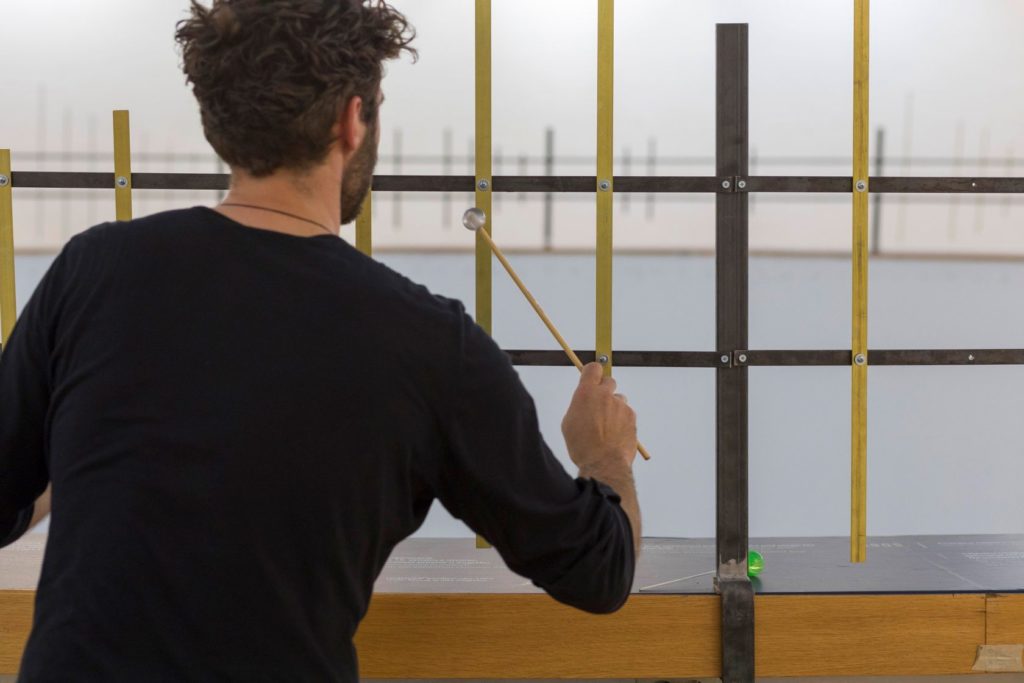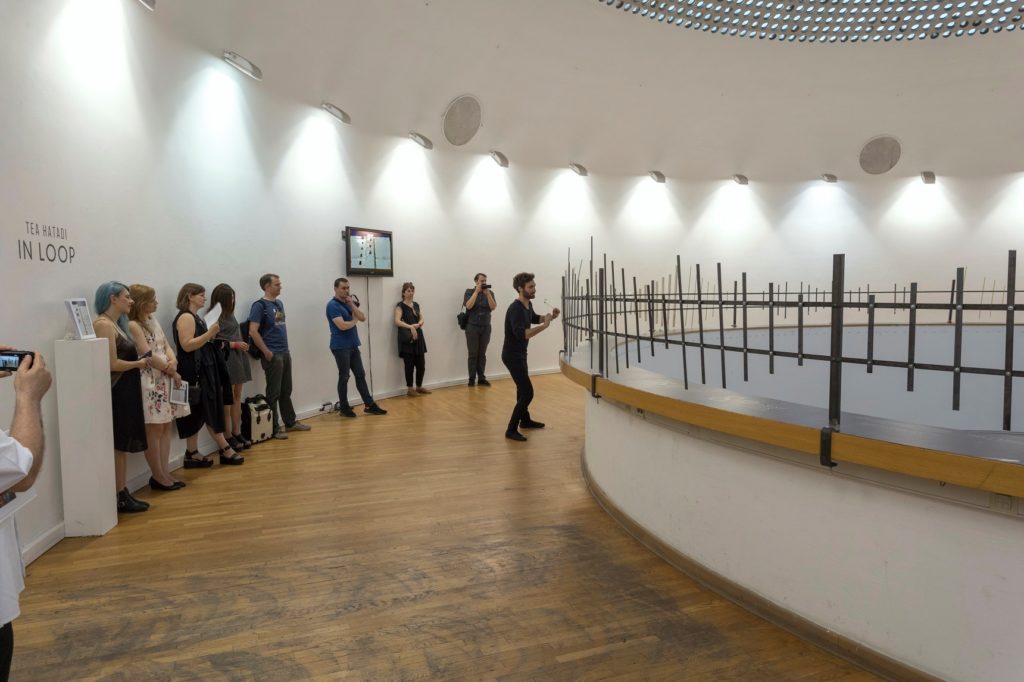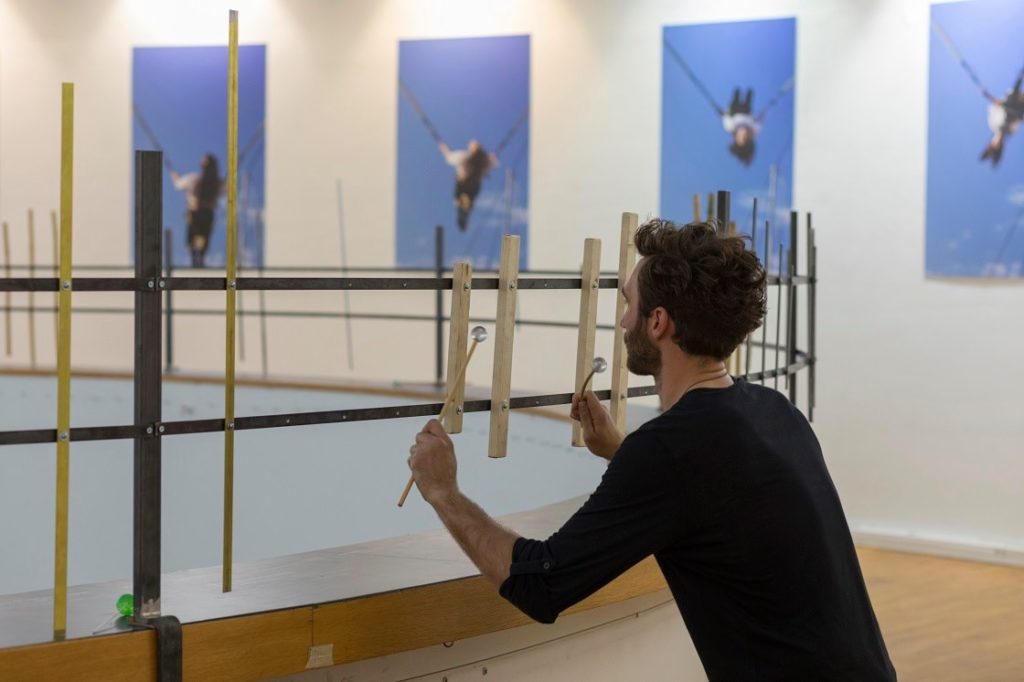In Loop
PM Gallery, Zagreb (HR), June 13 – 30, 2019
https://issuu.com/hdlu6/docs/hdlu_hatadi_deplijan_web
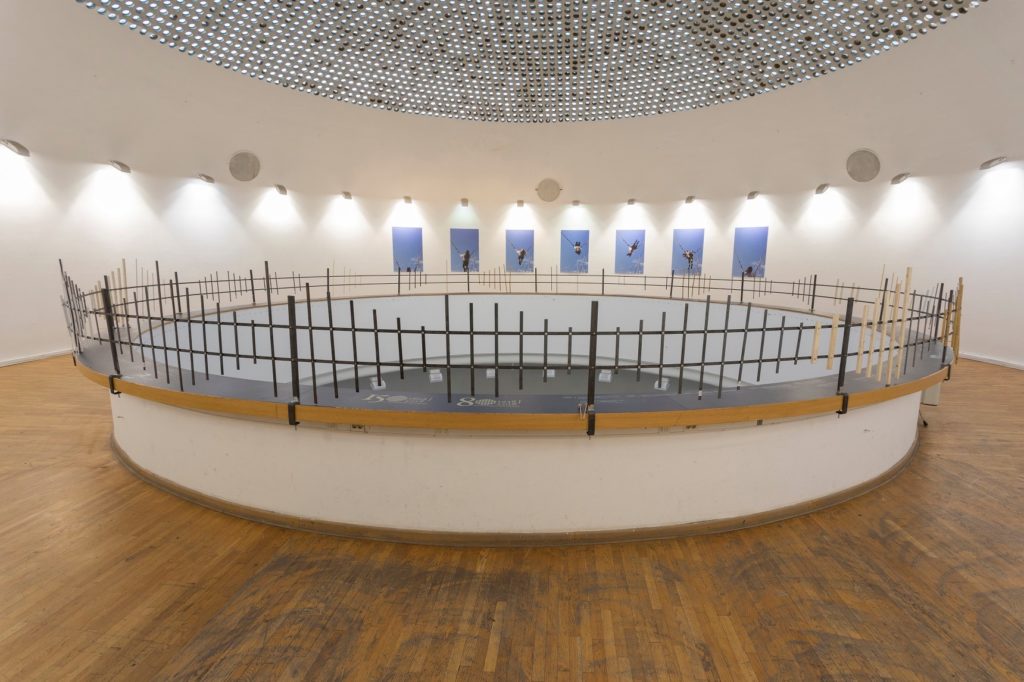
Performans: Josip Konfic
Preface In Loop Tea Hatadi
The decision to exhibit part of the work in parallel with the fence already existing in the pavilion brings Tea Hatadi back to her old dilemma, i.e. all the fences and passages she has been engaged in a dialogue with, by observing, capturing and transforming them, transferring them into different exhibition or public spaces. This time Tea approaches the fence as a trigger for reminiscing about childhood memories; for her it is a symbol of the unreachable, a place out of reach, in front of which she opts for play-music. By following the fence, which Tea shaped like a percussion instrument by arranging the pipes of various dimensions into an object or cloak that produces sound, its activation leads to the state of defence, but also distance from anything undesirable or, in the artist’s words, protection in the form of a continuous, circular game.
The fence in loop corresponds to the girl on the trampoline, who by turning around her own axis reiterates it, but each time in a different way — with irregular circles she creates a lasso for enjoying the zero gravity state enabled by playing on the trampoline. In an imaginary sketching of the exhibition, at the intersection of all possible movements (within the defined third: circular space, along and across the inserted instrument-fence and girl’s movements) we come to a series of reference points that result in a – performance.
From the ritual and representative Tea here moves on to exchange, by placing music between noise and silence, at the crossroads of social codification she is now revealing. Although labour is treated by the walk, movement, Tea does not opt for the journey as the goal; on the contrary, by treating it as the field of performance, she reveals labour without effort and compulsion as the only possible way of producing — music. Opposite to this same music there is noise, yet its production, or making the noise, leads to different orders: whereas music is a form of focused noise, controlled transmission, noise dissolves on its own, violently attacks the reminiscences of childhood, splitting all the connections with which the (set) sound points can be reached even tactilely. The totality of all the elements; field of performance, absence of angles, wall projections, circularly ordered tonalities for independent orchestrating the percussion and the presumed sensations when activating the apparatus in the middle of the pavilion, justifiably somewhere (like on the trampoline) mobilizes Moholy-Nagy’s and Walter Gropius’s idea of the total theatre in a contemporary context. And whereas the total theatre foresees sound masks from the most unpredictable places, broadcast when least expected, by activating the audience and making use of the abolished panorama stage, Tea emphasizes the importance of spatial orientation, and fits the audience-sound maker into the instrument; it is its integral part – percussion and repercussion and the same time.
Overlapping of the dense, homogenous light of the pavilion blocks the hierarchy of production within the sheet music due to which the rotation during the performance is also a modulation, like Roman Clemens’s stage design sketches in which new reference points simultaneously coordinate and confront in terms of composition, here placed in a dome, here and there blacked out, impermeable. Abolishment of a hierarchical relationship (such as coming to the place of performing a well-known sheet music or the concert of our favourite artist) such as the one in debate rooms, in which there is a place organised for one speaker, from which s/he can be heard or even better – listened to, the loop motivates us to accept the responsibility of participation, to – interpretation, without which no society can expect progress. Instead of fulfilling our expectations, In Loop challenges us to participate in creating a potential dramaturgy, offers the space of remembrance of cathartic effects of the theatre, (in this case) using the practices of the undercover, already mentioned total theatre.
The overlapping of (silent) sound planes, recorded in the form of video clips of a facade covered with a stretched white cloak, in which a building is wrapped, here sign for a commonplace, as any, anyone’s face covered in a too tight bag fighting for breath, is a reminder of the importance of sound-noise, which are first of all – the confirmation of presence! Space as the conservator of sound thus becomes that which also disperses it with its perforated dome-like drum.
With labour-play Tea simulates everyone’s personal memory, the multiple traces of which in finding individual reminiscence (especially at the end of everyone’s life sheet music), one with another, compete for our attention, for detachment – into encouragement for interpretation.
Come, I want to show you something.
Ana Mušćet
